The mountains’ queen of the hill
March 14, 2013
Thirty years ago, Kim Lamorie took her first hike in the Santa Monica Mountains. As the 54-year-old activist recalls it, it was love at first sight.
“The sweeping open space, the majestic ridgelines—it made me breathless,” remembers Lamorie, who in those days was a twentysomething working in production on the Canadian “SCTV” comedy TV series.
“I came from a part of Canada that was flat, and here were these spectacular mountains in this heavily populated urban area. I thought it was the most incredible thing I’d ever seen in my life.”
The producing gigs came and went, but the allure of the mountains never faded. Today, Lamorie—named “Woman of the Year” this week for the 3rd District—is the president of the Las Virgenes Homeowners Federation, Inc., one of the mountains’ most powerful, active and far-reaching advocacy groups.
“Where I live, you can see the sun rise and the sun set over the mountains,” she says. “I see coyotes, deer, mountain lions, owls, hawks, roadrunners. When you live here, you’re just so motivated to preserve it, because you know that once this treasured habitat is gone, it’s gone for good.”
In many ways, she says, environmental activism comes naturally to her. Born in Toronto, she grew up on the shore of Lake Erie in Crystal Beach, a Canadian resort community.
“Unlike in California, which has the Coastal Commission, all of the beachfront was privately owned,” says Lamorie. “From the earliest age I can remember, my family was battling the private property interests to get public beach access. My uncle still has an organization called Shorewalk in Crystal Beach.”
Environmental concerns, however, weren’t such a priority during Lamorie’s twenties, when her job at the Second City theater troupe’s TV sketch comedy series, “SCTV,” brought her to California. (“We set up offices at one point to write in Studio City and then went back to Toronto to shoot the episodes,” says Lamorie.)
Lamorie worked on the show’s syndication package in 1984 after “SCTV” stopped shooting, and ended her stint as an associate producer of a follow-up special. But eventually, like the show’s famed cast, from Martin Short to John Candy, Lamorie moved on.
And when her daughter, Krista, was born 17 years ago, Lamorie scaled back her involvement in show business.
For more than 20 years, Lamorie and her family have lived in a 3-bedroom house in the Santa Monica Mountains, on a hilltop near Calabasas that, like the mountains, she loved on sight. It was that affection, she says, that launched her activism.
“There was a development project that the local Calabasas Highlands Homeowners’ Association was fighting,” she remembers. “They were bulldozing over magnificent oak woodlands and scrub oak habitat, and you become protective of the place you live in, so I started to get active. And as soon as I met the activists in the Federation, I thought. ‘Oh. My. God. They’re just like me.”
Over the years, Lamorie has assumed ever greater leadership roles, first as a delegate, then as vice-president and then as president of the Federation, which advocates for policy on behalf of mountain communities spanning the Las Virgenes Valley.
Fellow activists say her fact-based approach and infectious energy have not only boosted involvement, but focused disparate constituencies on critical missions, from protecting oak woodlands and water quality to curbing development on pristine ridgelines. Last year, the Federation sent busloads of residents to testify against a redistricting plan that threatened to put the mountains into the same district as the Ports of Los Angeles and Long Beach.
“That job is like herding cats, but herding cats with a purpose,” says Steve Hess, an engineer and small business owner from the unincorporated community of Cornell who spent four years, from 2003 through 2006, at the helm of the Federation. “Kim has taken the Federation to the next level and given it a louder voice.”
“She not only knows all the facts on an issue, but she knows how to get things accomplished,” agrees Nancy Rothenberg, a neighbor of Lamorie and former president of the Calabasas Highlands HOA.
“She’s very savvy. And she has an encyclopedic mind for all the minutiae you need to know to effect any change.”
In a speech this week accepting the Woman of the Year honor, Lamorie credited her progressive Swedish mother and her fellow activists, “the real stewards and warriors who are not motivated by money, power or greed, but who are driven to preserve something so undeniably valuable.”
Next on her agenda? Protecting the California Environmental Quality Act from what she skeptically refers to as “quote-unquote ‘modernization’.”
And her opponents shouldn’t underestimate her, says Mary Ellen Strote, vice president of the Federation.
“Like any good leader, she picks her battles,” Strote says. “But no matter how powerful or well-funded her opponent, when the stakes are the Santa Monica Mountains, she never backs down.”
Posted 3/14/13
Drivers will get a charge out of this
March 7, 2013
Step away from that gas tank, Southern California commuters, and prepare for a jolt of good news: By this time next year, Los Angeles County will have more than 100 new charging stations for plug-in hybrid and electric vehicles.
Last month, Metro announced that five park and ride stations would each soon be installing four Level 2 chargers, enough to accommodate about eight vehicles per station at any given time.
Now the Los Angeles County Board of Supervisors has set the stage for 93 more stations around the county, approving grants and funding this week for public chargers at 40 more sites from the Music Center to county hospitals.
Tom Tindall, director of the county’s Internal Services Department, says the move will not only help shrink the county’s carbon footprint, but also responds to a growing demand among plug-in and EV owners for places to recharge. Though alternative vehicles have been slow to catch on among commuters in some parts of the country, Southern California’s malls and parking garages have been increasingly jammed with drivers of all-electric vehicles known as EVs (the Nissan Leaf, for example) and plug-in hybrids (such as the Chevrolet Volt or Toyota’s plug-in Prius) competing for too few outlets. (Both types of vehicles need to be plugged in, but EVs are strictly electric while plug-ins have a combustion engine as well as a battery that runs on electricity.) Some automotive bloggers are even reporting that “charging congestion” here has begun to replace “range anxiety” as the chief downside of going electric.
“More than a third of the EVs in the United States are registered in California, and over 40 percent of all the plug-in EVs sold in California are registered in Southern California Edison’s territory,” says Tindall. “This will provide charging areas that are convenient for both the public and county employees.”
Marie Nuñez, who oversees parking and fleet operations for ISD, says the new stations will begin opening in August, with the rollout complete by the end of the year. Some of the new stations will replace old and long-since decommissioned chargers at county garages, she says, but most will be new additions capable of charging up to two vehicles at one time. Locations will be released to web sites that list charging locations as they become available.
“We’re going to replace the three old-style chargers at the Music Center,” she says, “and we’re going to put four in at Walt Disney Hall. The county Arboretum and the Department of Public Works will each have three for the public. Lot 10 under Grand Park will get four chargers. The county hospitals will all get two to four chargers each, and the beaches at Marina Del Rey and Playa Del Rey will each get two. There should be enough to charge at least 150 cars at any given time.”
All will be outfitted with standard connections to accommodate the increasing numbers of Volts, Priuses, Leafs and other EVs and plug-ins being used by the public and the county fleet, says Nuñez, adding that 80 percent of the $384,687 cost of purchase and installation will be offset by two grants.
The rest of the outlay will come from existing budgets at participating county departments, which will pay a net cost of $778 per station. Ordinarily, Nuñez adds, commercial chargers cost about $4,000 each.
Nuñez says drivers can expect to be charged a nominal fee to cover the cost of electricity and maintenance, though details are still being worked out. Payment may be by credit card or smart phone, or may follow a subscription model similar to the one Metro is trying. Under that method, an hour of charging costs about $1.
Tindall expects the new stations to be popular with county employees as well as the public. “These are way stations for commuters, too,” he says.
As it is, he laughs, the alternative crowd has been making its needs known: “I’ve seen Volts parked in a couple of garages where people have plugged them in with extension cords.”
Posted 3/7/13
More affordable housing in the works
March 7, 2013
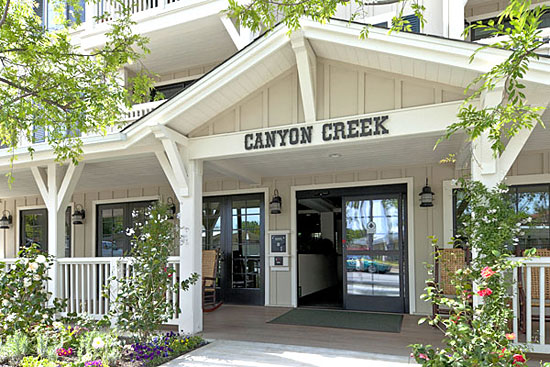
With affordable housing in short supply, the Canyon Creek development in Calabasas helps meet a growing need.
In a compromise intended to bolster the county’s supply of affordable housing even in times of budget uncertainty, the Board of Supervisors this week unanimously voted to set aside $15 million to build low- and moderate-income units.
At least half of the money will go to housing for the homeless and people with special needs.
Affordable housing projects across the county have been in limbo since the state moved to dissolve local redevelopment agencies last year. Since then, L.A. County has received some $75 million in unused affordable housing funds from the dissolution of the agencies.
A motion by Supervisors Gloria Molina and Mark Ridley-Thomas initially proposed that the entire $75 million be placed in an affordable housing trust fund to be used to fund projects over the next five years.
However, with looming uncertainty about coming demands on the county’s 2013-14 budget, Supervisor Zev Yaroslavsky offered a substitute motion to allocate $15 million now and decide what to do with the rest of the funds during the upcoming budget process. He said he supports devoting the funds to affordable housing in future years if the budget allows for it. The board approved the motion 5-0.
Before the vote, the board heard from a series of affordable housing advocates.
“Every night, over 8,000 homeless veterans sleep on L.A.streets, under bridges, in parks and in encampments. Nearly 2,500 of these homeless men and women have been on the streets for a year or more, and many struggle with PTSD, addictions to drug and alcohol, and chronic health conditions like hepatitis, heart disease, diabetes and HIV. The number of women veterans ending up on our streets is increasing at an alarming rate,” one of the speakers, Gigi Szabo of New Directions, told the supervisors. “Please help us create more housing for veterans by making sure that the money goes to affordable housing development.”
Maura Johnson of the Hollywood Community Housing Corporation added: “We have three projects that would greatly benefit from immediate funding,” including a transit-close development in the Third District featuring 54 units for families.
Affordable housing is priced for those making less than the area median income. According to a 2012 Regional Planning report, they range from a single person earning $17,750 or less annually to a family of four making $67,450 or less. Such housing represents a small fraction of the county’s overall housing stock. The Southern California Association of Governments has estimated that the unincorporated areas of the county alone need to add more than 30,000 units of extremely low- to moderate-income housing by 2014.
Posted 3/7/13
Where farm meets park
February 28, 2013
Gordon Pawlowski didn’t know what to expect when he tied on his apron in anticipation of Grand Park’s first-ever farmers’ market on Tuesday. It didn’t take long to find out.
“We sold out at 12:30 p.m.,” said Pawlowski, chef and owner of Lenny G’s, a Cajun eatery. “I had to turn away a line of 30 people.”
The market will be held every Tuesday from 10 a.m. to 2 p.m. between Broadway and Spring Street, just in front of City Hall. At the inaugural event, 22 vendors were selling berries, flowers, crafts, exotic spices and teas, baked goods and prepared foods like Pawlowski’s popular po’ boys. Julia Diamond, Grand Park’s programming director, said organizers started small on purpose.
“At its core, a farmers market is about supporting independent business owners, small farms and local vendors,” said Diamond. “My biggest concern is for them, because they take the risk in coming there.”
The event drew an estimated 1,500 people—a mix of workers from adjacent buildings, passers-by and local residents.
“It went gangbusters,” said Diamond.
Fresh produce lured Carolyn Lifsey and Monica Roache away from their work at MOCA, about six blocks away on Grand Avenue. They learned about the event from Grand Park’s Facebook page. (Grand Park also is on Twitter.)
“The walk is actually kind of nice,” Roache said. “Being that it’s in the park, it offers a really tranquil ambiance for lunchtime.”
Others, like downtown worker Henry Chisom, said they were hoping for a bigger selection and smaller prices. He also hopes to see some music added to the mix.
He may be in luck.
Given the success of the trial run, Diamond plans to expand the market to meet the demand. (“We will have more farmers next time,” she said, referring to the fact that only a handful of produce vendors were selling on Tuesday.) Also, on alternating Tuesdays through the end of May, Lunchtime Concerts in the Park will add live music and food trucks on the block between Grand Avenue and Hill Street, effectively activating the whole park.
Other than the farmers’ market, relatively few organized events have taken place in Block 4—a grassy, expansive section of park. Diamond was jazzed to see the area bustling with activity.
“It’s such a big space,” she said, “that it takes the right kind of event.”
Posted 2/28/13
Dave+Apollo=animal attraction
February 28, 2013
This really is a bird of another feather.
For starters, she’s got a masculine name—Apollo. But that’s nothing compared to this: She’s got a serious turkey vulture crush on a bearded, soft-spoken Los Angeles County worker named Dave Stives.
Stives, the county’s regional animal keeper, has become accustomed to Apollo working herself into a hormonal tizzy when he nears her enclosure at the Placerita Canyon Nature Center in the Antelope Valley, especially during spring mating season. Among other things, she spins in circles and flaunts her tale. “A courtship dance,” says Stives.
Apollo and Stives first met nearly a decade ago. Apollo had been hit by a vehicle in Virginia and was shipped west for treatment at a private facility in the Antelope Valley. A tendon in Apollo’s wing had been damaged, thus bringing her flying days to an end. In those early days, Stives had helped in her care and training. Two years later, when the private facility went under, Apollo was moved to the county’s Placerita Canyon center. It was love at second sight.
“She remembered me and trusted me,” Stives says. That was seven years ago, he says, and the relationship is still going strong. “She follows me around like a puppy dog,” Stives says affectionately of the black-feathered, red-headed vulture.
Stives, 48, has worked as an animal keeper for the county’s Department of Parks and Recreation for some 14 years. He’s responsible for the seven nature centers and parks that house a menagerie of animals, including birds, possums, raccoons, rattlesnakes—“probably anything that is indigenous in the state,” he says. He travels from one facility to the next making sure all are in compliance with state and federal laws governing everything from the diet of the animals to their educational use, a requirement for the county to keep them. “We make sure they have the best possible life under our care,” Stives says.
At home, Stives also has some feathered and furry friends—two dogs, two cats, three falcons, plus a snake. As a “master falconer,” he takes his birds into the wild, where he’s “conditioned” them to circle overhead as he beats the bushes for rabbits. The falcons then swoop in.
As for Apollo, she now spends her weekends with Stives at educational animal shows, dispelling myths of vultures as the creepy outcasts of the bird world. “She’s actually quite pretty,” he says. “In her own way.”
To see the two in their native habitat, click on the video above.
Posted 2/28/13
Operatic opportunity, open to all
February 28, 2013
This one’s going out to all you shower-singing sopranos, tenors and basses out there. If you’ve ever wanted to belt out the toreador song from Carmen in public, your moment has arrived.
And you can do so under professional supervision, as LA Opera presents its first annual “Great Opera Choruses” program on Saturday, March 2.
The event is free, but reservations are required to take part in the opera’s presentation of “Sing Out Loud!” at 1 p.m. at the Campus Theatre at Cal State Northridge. Billed as a “participatory recital,” the audience will get to sing along with opera professionals on works including “Toréador” from Carmen, “Libiamo” from La Traviata, and even “Oh, What a beautiful Morning” from Oklahoma! (There will be handouts, so no worries if you haven’t committed all those lyrics to memory.)
Call (213) 972-3157 to reserve free tickets, or email [email protected].
Earlier in the day, an 11 a.m. performance of a specially-commissioned short version of Mozart’s The Magic Flute—featuring San Fernando Valley schoolchildren along with opera artists and audience participation sing-alongs—is sold out, but there will be a standby line.
The theatre is located at 18111 Nordhoff St., Northridge, 91330. Parking in Lot B1 on Nordhoff is $6.
Posted 2/28/13
It’s a lock: subway tests underway
February 27, 2013
As Metro officials prepare to latch the gates on L.A.’s subway system this June, they’ve had obstacles to overcome in familiarizing passengers with the TAP cards that are now mandatory for most travelers.
The final frontier, though, has been figuring out a way to allow Metrolink riders, who use paper tickets, to connect seamlessly with Metro trains once the gates are locked.
The solution: microchip-embedded paper tickets that will unlock gates for Metrolink commuters passing through.
Starting in March, that workaround will be getting a major tryout in the real world, with gates temporarily locking at Union Station’s West Portal during certain planned intervals as part of a joint project by Metro and Metrolink.
The object is to see if Metrolink riders and an in-house test group of passengers can navigate the gates smoothly.
Meanwhile, an intermittent series of locking tests has been rolling out elsewhere in the system to see how the TAP card-carrying public is faring—and how Metro employees are responding.
Recent tests at the Wilshire/Normandie, Wilshire/Western and North Hollywood stations have put staffers through their paces responding to patrons’ calls for assistance through the “Gate Help Phone System,” or GTEL, which is being installed at all stations with gates.
“This whole effort right now is to get our folks who man the GTELs some practice,” said David Sutton, Metro’s Deputy Executive Officer of TAP . “I don’t think they’ve had any questions they can’t answer.”
Sutton’s team also is grappling with occasional glitches like the bottlenecks that can crop up when a passenger’s TAP card doesn’t work, or a customer attempts to maneuver a bicycle through an emergency door.
“Customers are on a learning curve, that’s true, but they seem to be getting it,” Sutton said. “Even at North Hollywood, which is a very, very busy station, they’re getting it.”
Posted 2/27/13
Want a happy camper? Be first in line
February 27, 2013
There’s a secret to getting your kid into a great summer camp: Sign up before spring.
Unfortunately, most parents remember that secret just as the school year is ending. But for those who do register early, Los Angeles County is a summer playground of options.
Here’s a sampling of what’s out there. Act quickly. Some already are selling out.
- Enrollment opened last week for the Los Angeles County Museum of Art summer art camp, and some weeks are already fully booked. Several are still open, though, with artist-led workshops for art-loving kids aged 6-13. The camp runs from 10 a.m. to 3 p.m. starting June 10, and proof of age is required. Tuition is $365 per week ($325 for NexGen members). Financial aid for art camp is also available. For more information, call 323-857-6512 or click here.
- Sign-ups also opened this month at the popular Summer Nature Camp at the Los Angeles County Arboretum & Botanic Gardens, which offers weeklong sessions of outdoor and indoor fun for children aged 5-10. The program runs from 9 a.m. to 3:30 p.m. with extended care from 8-9 a.m. and 3:30-5 p.m. if parents need it. Sessions start June 10 and run through the week of August 5. Tuition excluding extended care is $300 a week for Arboretum members and $335 for non-members. Half-day sessions also are available, and there’s a 10% sibling discount. For more information, call 626-821-4623 or click here.
- Another big crowd pleaser is the Adventures in Nature Day Camp at the Natural History Museum of Los Angeles County, which offers sessions in everything from fossil labs to filmmaking for kids in kindergarten through 8th grade. Registration opens March 1 for the weeklong sessions, which start June 24 and run through the week of August 5. Program hours are 9 a.m. to 3 p.m., with extended care from 8-9 a.m. and 3-5 p.m. if needed. Tuition excluding extended care is $250 a week for members and $300 a week for non-members. A limited number of scholarships are available. To sign up early, watch this space. For more information, call 213-763-3348 or click here.
- The Mountains Restoration Trust’s Discovery Nature Camp for little naturalists has some good news and some bad news. The bad news is that it will only be available for one week—the week of June 24—this summer, and there are only 18 available spaces. The good news is that if you’re reading this, you could be first in line. The camp, which operates out of a historic farmhouse in the Santa Monica Mountains, offers hands-on interaction with nature for children aged 8-12. Hours are from 9 a.m. to 3 p.m. and tuition for the week is $260. For more information, call project manager Susan Haugland at 818-591-1701 or click here.
- Nothing says summer in SoCal like Junior Lifeguards, but good programs can require some advance swimming prep. Registration for returning junior guards in the Los Angeles County Fire Department’s program starts March 4. This year’s program runs Monday through Friday from July 1 to August 2, with morning or afternoon sessions in crucial ocean skills for kids aged 9-17. Fee is $476 and financial aid is available. New registrants must show proof of age and pass a swim test. Experienced Junior Guards 16 and over can qualify for the department’s Cadet Program. For much more information, or to find the camp nearest you, call 310-939-7214 or click here.
- The surf and beach camps traditionally operated by the Los Angeles County Department of Beaches & Harbors are still on hiatus, due to budget cuts. But plenty of community beach programs have arisen to fill the gap in the meantime. For a list of community-based summer youth camps operated at local beaches, click here.
- Just keeping an eye out for kid-friendly outings? Check out SummerSounds at the Hollywood Bowl. A music festival designed just for little ones, SummerSounds features two concerts daily through July and August, at 10 a.m. and 11:15 a.m., plus arts and craft workshops, for kids 3-11. The music ranges from gospel to mariachi to reggae to traditional Filipino music—and it’s a bargain. Tickets aren’t on sale yet, but traditionally they have been $7 regardless of age and $5 for workshops. For more information as summer approaches, watch this space.
Posted 2/27/13
Major closure, but no Carmageddon III
February 27, 2013
Motorists, be forewarned: the northbound 405 Freeway will be a great place to avoid the first weekend in March.
Three northbound lanes on the freeway will be closing for 55 straight hours between Montana Avenue and Getty Center Drive. In addition, the Getty Center Drive and Moraga Drive northbound on-ramps will be closed, as will the northbound Montana and Moraga off-ramps.
Despite the length of the closure, this is no “mini Carmageddon”—although officials stress that drivers should plan alternate routes through the area to avoid major backups.
“We are concerned with daytime traffic,” said Kasey Shuda, construction relations manager for the project. “Obviously, there will be some delays if people don’t divert.”
Still, she added: “It’s not that big of a deal at all. It’s not like Carmageddon at all…We do three-lane closures at night all the time.”
Northbound travelers should get off at Wilshire and take Sepulveda Boulevard as an alternate route through the area.
The closure is needed so that workers can pave a portion of the new carpool lane that’s at the heart of the massive construction undertaking; bridges and ramps also are being widened and rebuilt as part of the overall improvement project.
All in all, it could be worse: there’s no need for a similar three-lane closure on the southbound side because workers were able to complete that work during Carmageddon II.
Weather permitting, the closures will begin at 10 p.m. on Friday, March 1. The lanes are expected to reopen at 5 a.m. on Monday, March 4.
Changeable message signs publicizing the coming lane closures are already up in the area, and beginning March 1, Caltrans signs countywide will alert motorists about travel times in the closure zone throughout the weekend. Traffic control officers will be on duty and there are contingency plans to close more ramps if needed to keep traffic moving along Sepulveda.
Learn more about it at an upcoming community meeting scheduled for February 28.
Posted 2/13/13







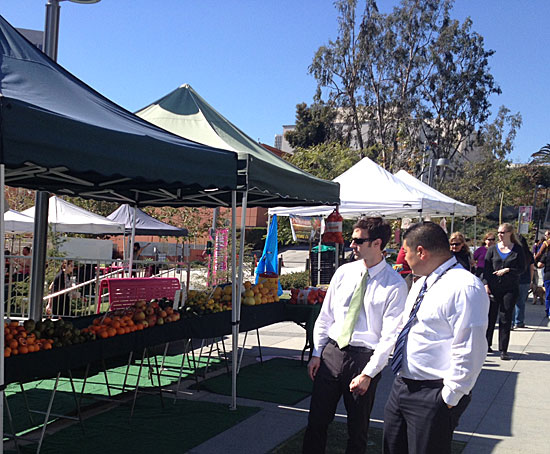


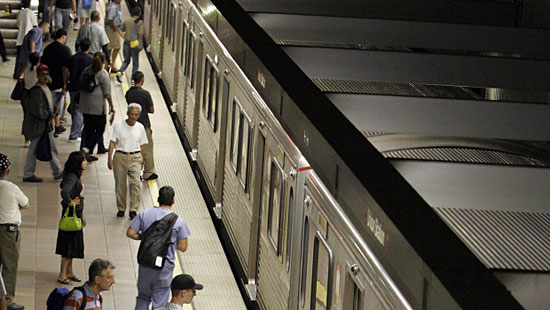
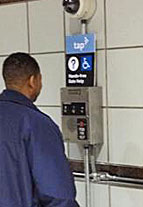
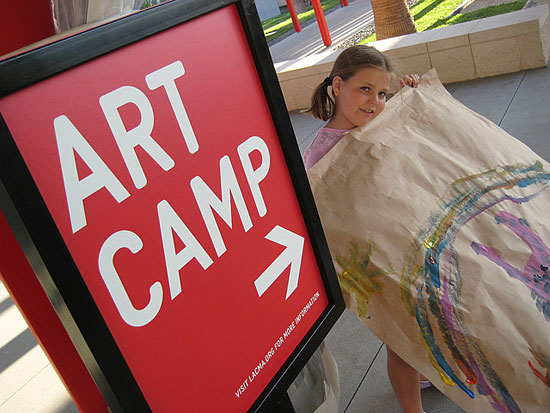






 Check for the latest closure information
Check for the latest closure information








